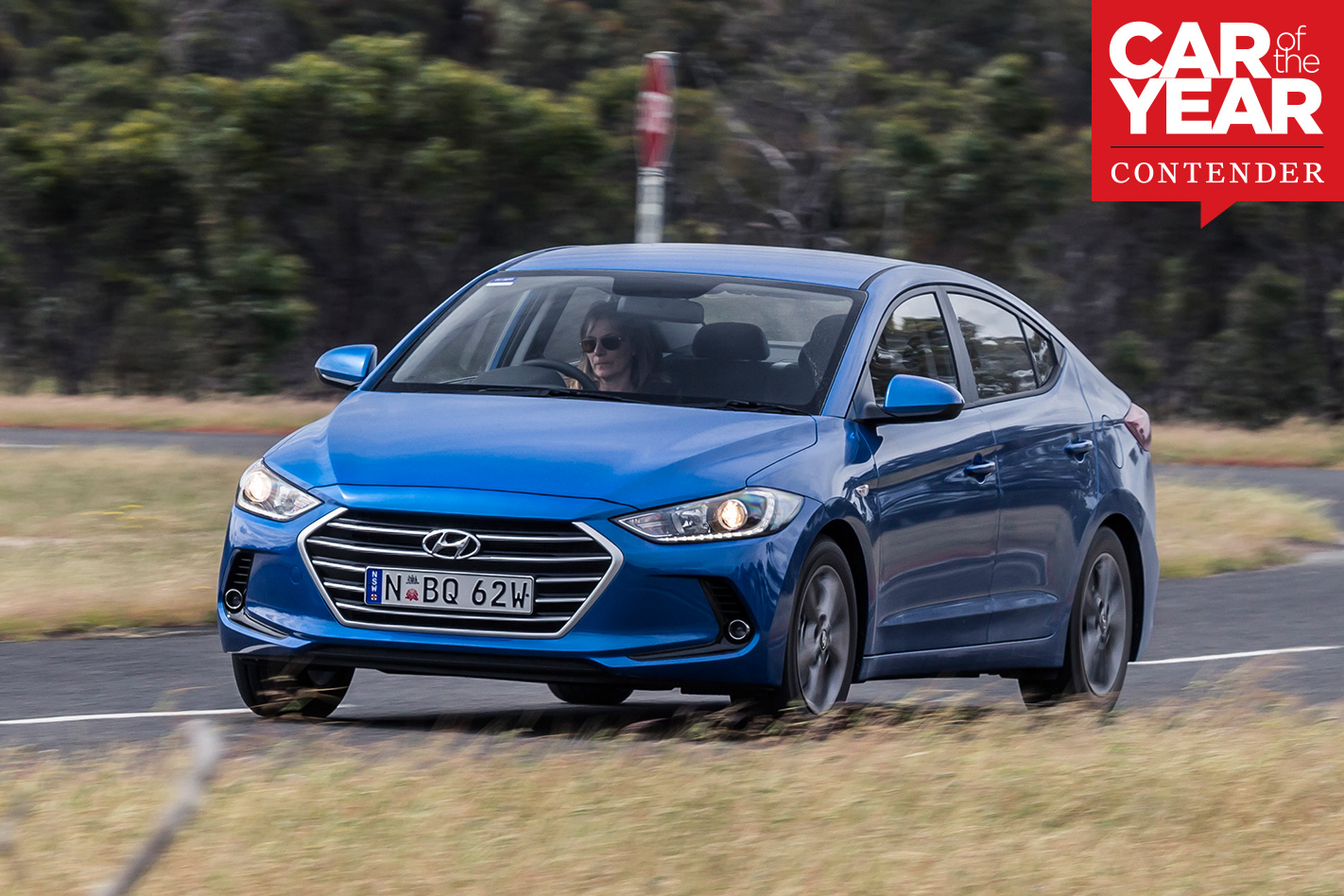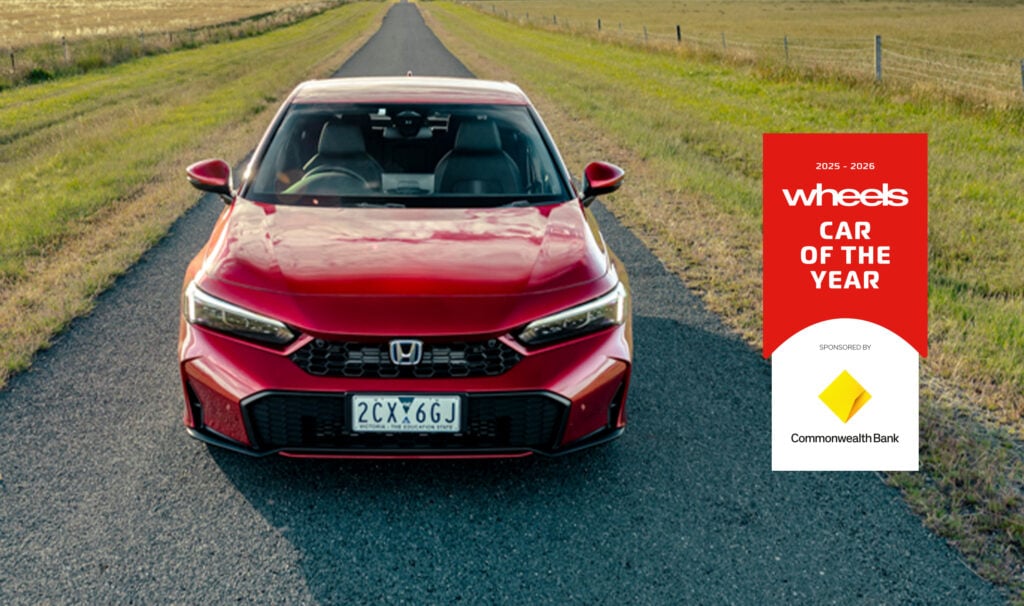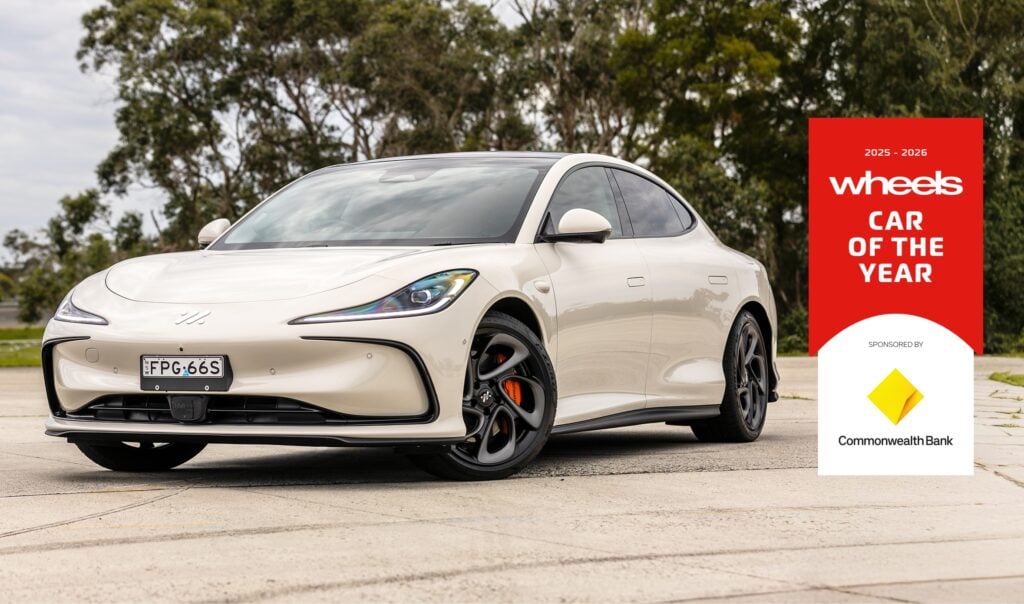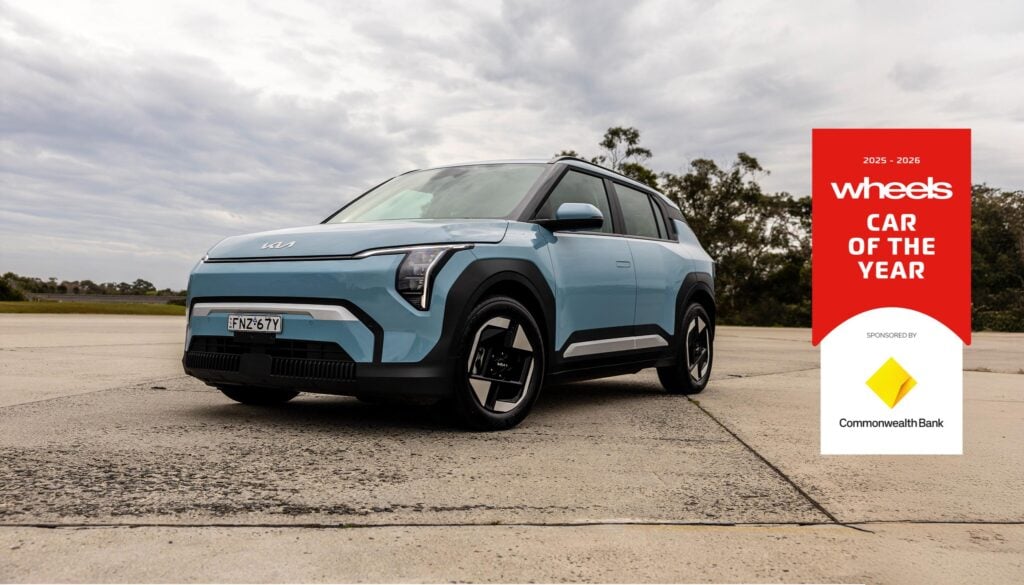IN WHAT IS a reversal for cheap Korean small cars, the most expensive version of the sixth-gen Elantra is the best. And the only one to consider.
That’s right, folks. Look for the ‘SR’ badge (and ignore the old-school bodykit and spoiler treatments), because this cracking little sporty sedan is the neat but anonymous small Hyundai sedan’s saving grace.
Lusty performance from a 1.6-litre direct-injection turbo four, driving the front wheels via a (notchy) six-speed manual or (slick) seven-speed dual-clutch transmission, bigger brakes, reworked front suspension, a multi-link independent rear end (replacing a torsion beam), and a faster steering rack create a driver’s sedan of real substance.
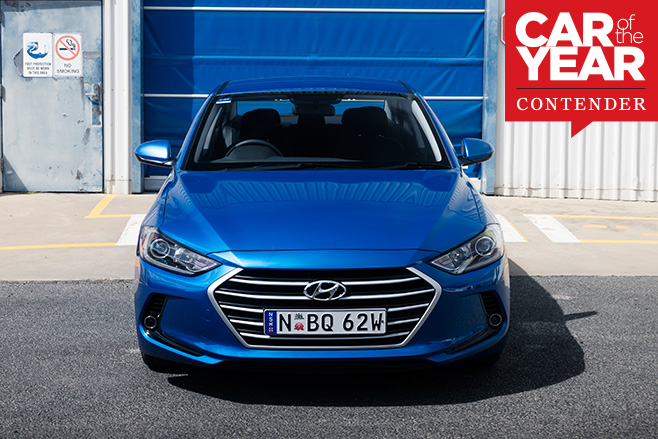
Body hugging seats, a terrific steering wheel, decent equipment, and appropriately lairy trim lift an otherwise restrained cabin, though sat-nav is strangely missing while the sloping ceiling and sunroof can snare heads.
So, the SR bodes well for the forthcoming next-gen Hyundai i30 hatch that shares most of its chassis fundamentals. The rest of the Elantra range, though, is mired in mediocrity.
While interior space is generous, this is a flair-free zone. Granted, the archly conservative dash does not put a foot wrong in terms of layout and practicality, thanks to ultra-clear instruments, light and easy controls, excellent ventilation, and lots of places to put things in or on. Nobody will find this Hyundai challenging, but nor could it ever be desirable. And the rear-seat ambience is a bit depressing.
The robust 2.0-litre atmo four-pot and amenable six-speed torque-converter auto transmission provide spirited acceleration and fairly quick responses when more is called for, though you won’t be wanting to visit the higher regions of the rev counter because it gets raucous.
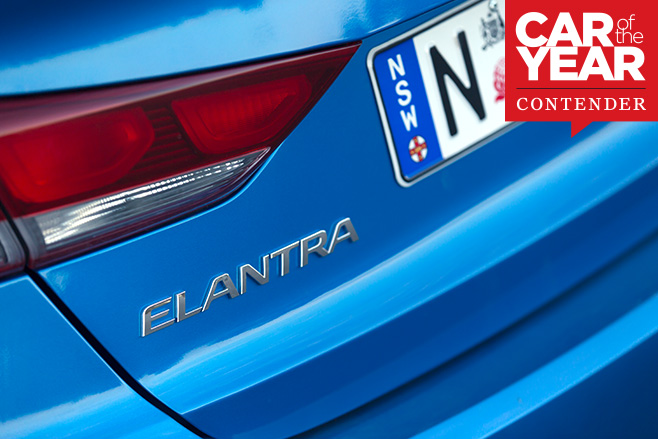
Not nearly enough though. The handling is now predictable and controlled, but the steering is treacly and overly heavy. The suspension remains jittery and loud, the stability control is ragged during fast lane changes and tardy on dirt. And wet/gravel braking is poor.
Finally, while blind-spot detection, lane-change assist, and rear cross-traffic alert are at least offered in the SR variant, AEB is absent altogether.
The latest Elantra, therefore, is a tale of two Hyundais – one that’s frisky and fun, and another that’s way off the small-car pace despite the fact it plays in Korea’s typically happy price-leader zone.
Specs
BODY Type: 4-door sedan, 5 seats Boot capacity: 458 litres Weight: 1255 – 1415kg
DRIVETRAIN Layout: front engine (east-west), FWD Engines: 1999cc 4cyl (112kW/192Nm) 1591cc 4cyl turbo (150kW/265Nm) Transmissions: 6-speed manual; 6-speed automatic; 7-speed dual-clutch
CHASSIS Tyres: 205/55R16 – 225/45R17 ADR81 fuel consumption: 7.1 – 7.7L/100km CO2 emissions: 163 – 176g/km Collision mitigation: No Crash rating: 5-star (ANCAP)
Prices: $21,950 – $31,290
MORE: Hyundai Elantra Range Review MORE: Hyundai Elantra Specs, Range & Price

